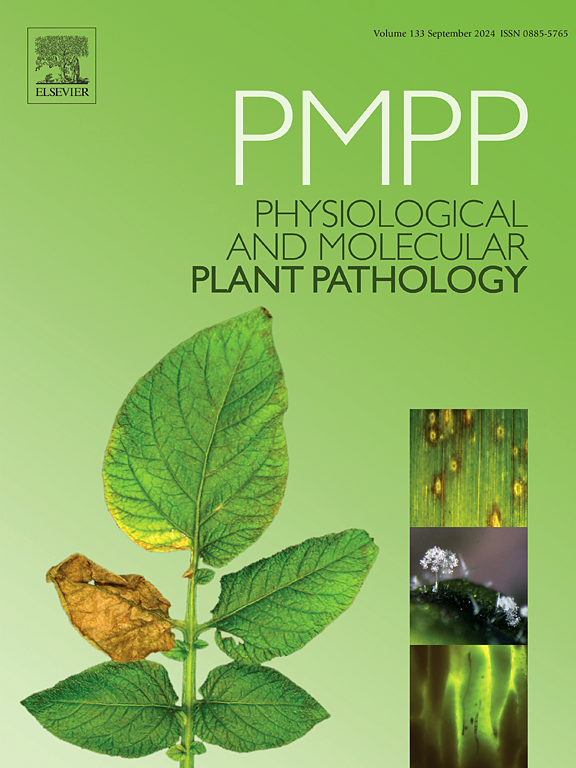Light-oxygen-voltage photoreceptor-regulated virulence in the pathogenic bacterium Pseudoalteromonas piscicida X-8 of a farmed seaweed bleaching disease
IF 3.3
3区 农林科学
Q2 PLANT SCIENCES
引用次数: 0
Abstract
The outbreaks of bleaching disease of the farmed Saccharina japonica are closely associated with the increased light intensity at the late nursery stage. Based on the light-oxygen-voltage (LOV) photoreceptor in the causative bacterium Pseudoalteromonas piscicida X-8 (PpX-8), we hypothesize that PpX-8 has a light-regulated virulence mechanism through LOV photoreceptors as those in phytopathogenic bacteria. In this study, combining infection assays, bioinformatics approaches, and gene knockout techniques, we investigated the light-regulated virulence mechanism of PpX-8. Our results showed that white light negatively affected the growth but enhanced both motility and virulence of PpX-8 compared to darkness. The light-oxygen-voltage photoreceptor of PpX-8 (PpX-8-LOV) was found to negatively regulate growth and biofilm formation under white light while enhancing motility and virulence at the initial stage of infection. Furthermore, the photoreceptor PpX-8-LOV up-regulated the expression of genes involved in quorum sensing, iron acquisition, and the type II secretion system, thereby enhancing the virulence of PpX-8. This study provides valuable insights for S. japonica farms to optimize light management strategies, thereby effectively preventing or reducing the occurrence of bleaching disease.
光氧电压光感受器对养殖海藻白化病病原菌假异单胞菌X-8的毒力调控
养殖粳稻白化病的发生与苗期后期光照强度的增加密切相关。基于病原菌假互变单胞菌X-8 (Pseudoalteromonas piscicida X-8, PpX-8)的光氧电压(LOV)光感受器,我们推测PpX-8与植物致病菌一样,通过LOV光感受器具有光调控的毒力机制。在这项研究中,我们结合感染试验、生物信息学方法和基因敲除技术,研究了PpX-8光调控的毒力机制。结果表明,与黑暗相比,白光对PpX-8的生长有负面影响,但增强了PpX-8的运动性和毒力。发现PpX-8的光氧电压光感受器(PpX-8- lov)在白光下负调控生长和生物膜形成,同时在感染初期增强活力和毒力。此外,光感受器PpX-8- lov上调群体感应、铁获取和II型分泌系统相关基因的表达,从而增强PpX-8的毒力。本研究为粳稻养殖场优化光照管理策略,从而有效预防或减少白化病的发生提供了有价值的见解。
本文章由计算机程序翻译,如有差异,请以英文原文为准。
求助全文
约1分钟内获得全文
求助全文
来源期刊
CiteScore
4.30
自引率
7.40%
发文量
130
审稿时长
38 days
期刊介绍:
Physiological and Molecular Plant Pathology provides an International forum for original research papers, reviews, and commentaries on all aspects of the molecular biology, biochemistry, physiology, histology and cytology, genetics and evolution of plant-microbe interactions.
Papers on all kinds of infective pathogen, including viruses, prokaryotes, fungi, and nematodes, as well as mutualistic organisms such as Rhizobium and mycorrhyzal fungi, are acceptable as long as they have a bearing on the interaction between pathogen and plant.

 求助内容:
求助内容: 应助结果提醒方式:
应助结果提醒方式:


